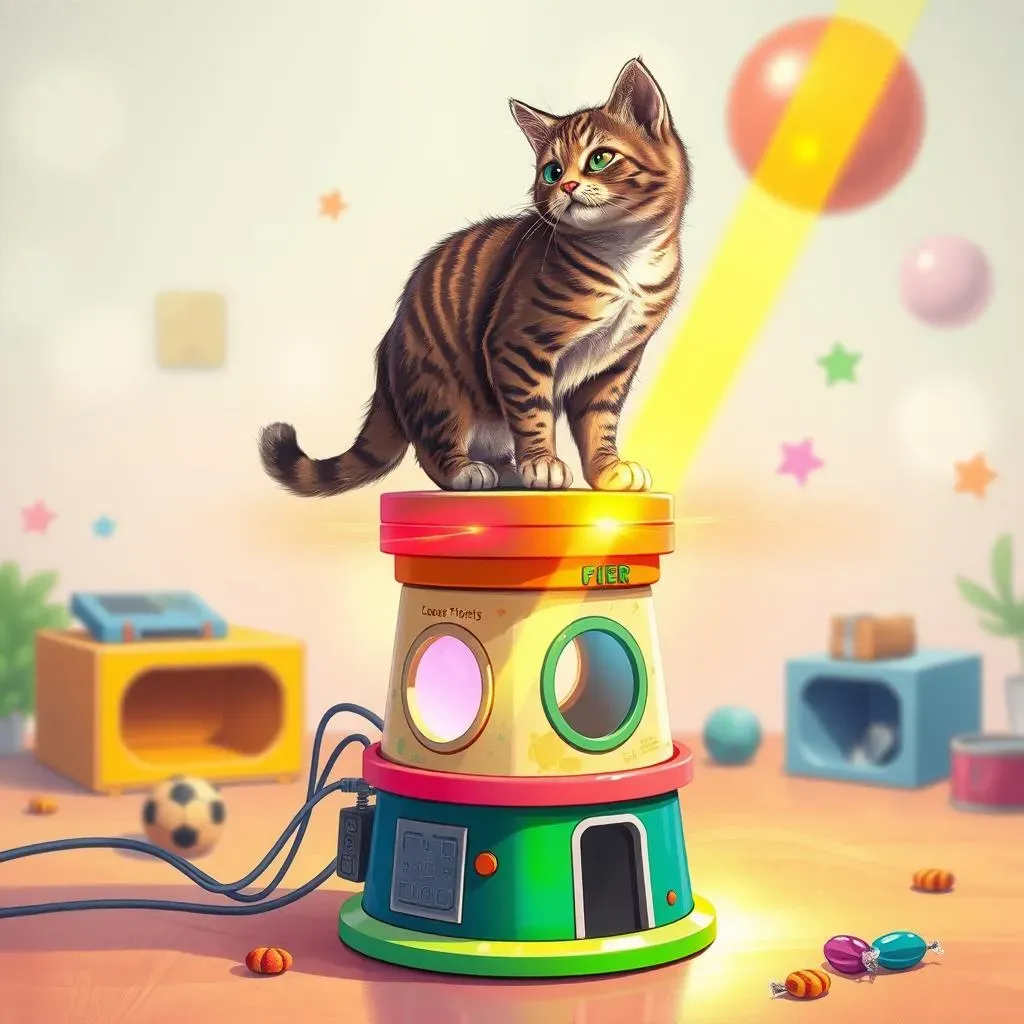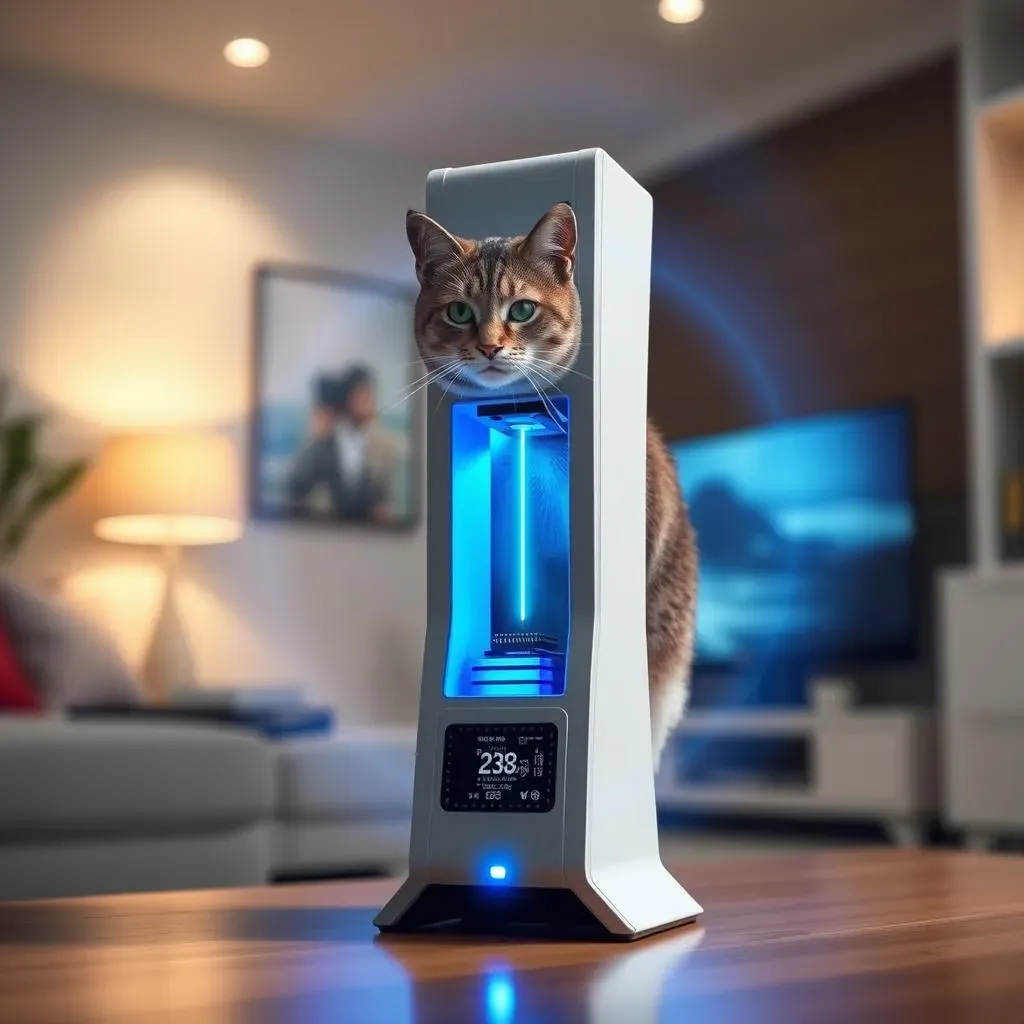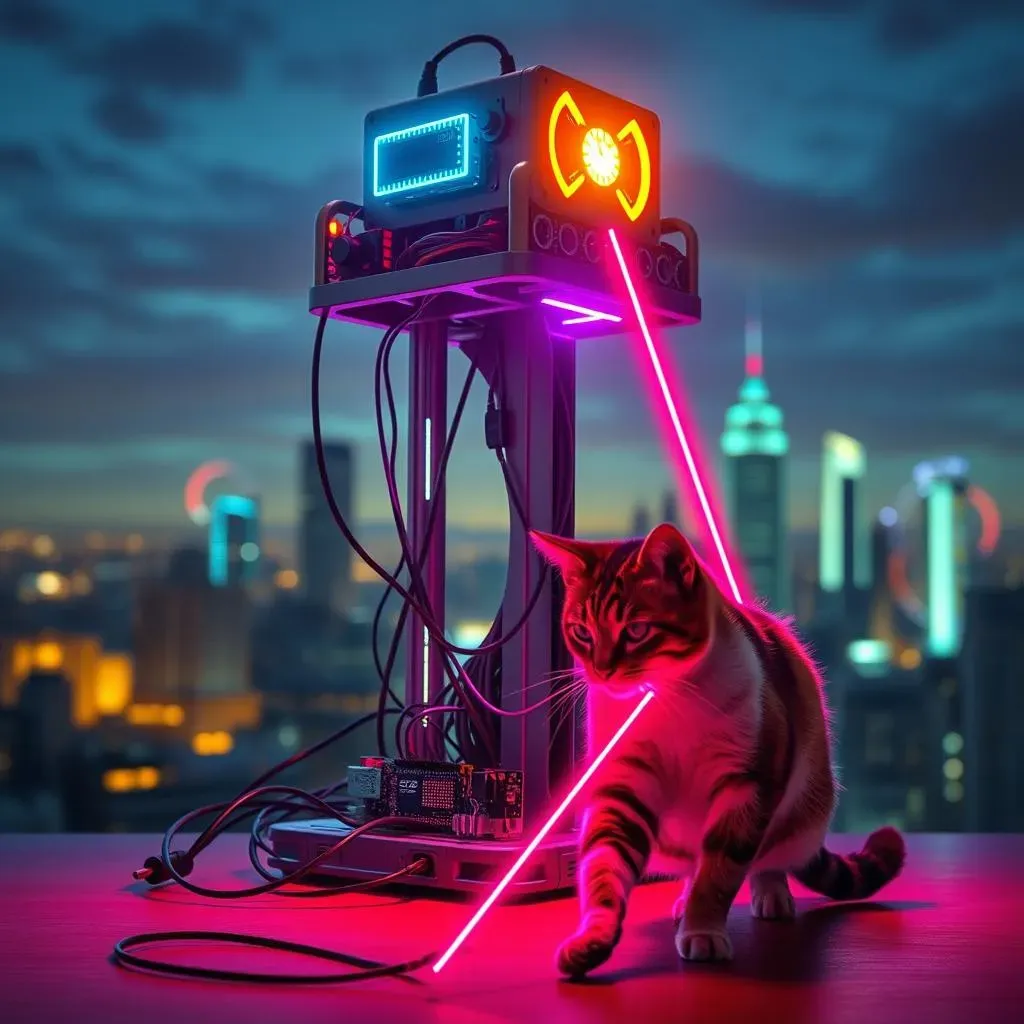Table of Contents
Is your cat bored? Do they deserve more than just a feather wand and a crumpled piece of paper? Then get ready to unleash your inner engineer and build the ultimate cat entertainment center: a DIY cat laser tower! This isn't your average laser pointer; we're talking about a fully automated, endlessly engaging, purr-fectly designed cat laser tower. Forget flimsy store-bought toys that break after a week. This project is built to last, designed to challenge even the most sophisticated feline hunter, and best of all, it's surprisingly simple to make. Throughout this article, we'll guide you step-by-step through the process, from gathering the necessary components and understanding the basic electronics, to writing the Arduino code that brings your creation to life and finally, cat-proofing your masterpiece. We’ll cover everything you need to know to build your own amazing cat laser tower, turning your home into the ultimate feline fun zone. Prepare for endless hours of entertainment – for both you and your furry friend. Get ready to build the coolest cat laser tower on the block!
Building Your Cat Laser Tower: A StepbyStep Guide

Building Your Cat Laser Tower: A StepbyStep Guide
Choosing Your Foundation: The Tower's Structure
The first step is deciding on your tower's structure. Think of it like building a house – you need a solid base. A sturdy cardboard tube, like a Pringles can (because who doesn't have a stash of those?), works perfectly. You could also use PVC pipe, a repurposed tin can, or even a small wooden dowel. The key is stability; you want a tower that won't topple over easily, especially when your excited kitty decides to attack it. Consider the height, too – you want the laser to reach interesting spots on the floor, but not so high that it's unreachable for your cat. A good starting point is around 12-18 inches.
Material | Pros | Cons |
|---|---|---|
Cardboard Tube | Easy to find, lightweight, easy to decorate | Can be less sturdy, might not withstand rough play |
PVC Pipe | Durable, easily customizable | More expensive, requires cutting and potentially more advanced tools |
Tin Can | Recyclable, sturdy | Might require some extra work for structural support and decoration |
Powering Up: Electronics and Connections
Now for the fun part: the electronics! You'll need a small servo motor (SG90 is a popular choice), an Arduino Nano (or similar microcontroller), a low-power laser module (make sure it's cat-safe!), a USB power bank, and some jumper wires. The Arduino acts as the brain, sending signals to the servo to rotate the laser. The servo, in turn, moves the laser module, creating that enticing, unpredictable red dot. The power bank provides power to the whole system. Connecting everything might seem daunting, but it's pretty straightforward. Just follow the wiring diagram (which we’ll provide in a later section, don’t worry!). A breadboard can help with neatness and easy testing.
- Arduino Nano (or compatible)
- SG90 Servo Motor
- Low-Power Laser Module (cat-safe!)
- Jumper Wires
- USB Power Bank
- Small Piece of Foam or Polystyrene
Adding the Finishing Touches: Assembling Your Masterpiece
Once the electronics are connected and tested, it's time to build the tower itself. Attach the servo motor securely to the top of your chosen base. You might need some glue, tape, or even small screws, depending on the materials you've chosen. Then, carefully mount the laser module onto the servo arm. A small piece of foam or polystyrene can provide a stable and cushioning base for the laser. Finally, decorate your tower! This is where you can get creative. You can paint it, wrap it in fabric, add some catnip toys nearby, or even build a little platform around it. The goal is to create an inviting and exciting structure that your cat will love to interact with. Remember, this is a cat toy, so let your imagination run wild!
"The best things in life are simple. The best cat toys? Even simpler." - Unknown Cat Enthusiast
Essential Components for Your Cat Laser Tower

Essential Components for Your Cat Laser Tower
The Brains of the Operation: The Microcontroller
The heart of your cat laser tower is the microcontroller, the tiny computer that controls everything. We recommend using an Arduino Nano; it's affordable, easy to program, and readily available. Think of it as the tower's brain – it receives input, processes information, and sends commands to the other components. Other microcontrollers might work, but the Arduino Nano offers a great balance of ease of use and functionality. You'll be writing simple code to tell the Arduino how to move the laser, creating a captivating chase for your cat. Don't worry if you've never programmed before; the code is surprisingly straightforward, and we'll walk you through it step-by-step.
- Arduino Nano (or compatible)
- USB Cable for Programming
- Breadboard (optional, but highly recommended for easy wiring)
The Mover and Shaker: The Servo Motor and Laser Module
Next, you'll need a servo motor to move the laser. The SG90 servo is a popular and inexpensive choice. It's small, lightweight, and powerful enough to rotate the laser module smoothly and accurately. The servo is controlled by signals from the Arduino, allowing you to precisely direct the laser's movement. For the laser itself, choose a low-power laser module; safety is paramount. Ensure it's specifically designed for pet toys to avoid any potential eye damage to your furry friend. Remember, this is all about fun, not harm! You’ll attach the laser module to the servo arm, allowing the servo to rotate and sweep the laser across the floor.
Component | Specifications | Importance |
|---|---|---|
Servo Motor (SG90) | Small, lightweight, 180-degree rotation | Moves the laser module |
Low-Power Laser Module | Class II or lower, red light preferred | Provides the enticing red dot |
Programming the Brains of Your Cat Laser Tower

Programming the Brains of Your Cat Laser Tower
Getting Started: The Arduino IDE and Your First Sketch
Alright, let's dive into the coding! First, you'll need the Arduino IDE (Integrated Development Environment), which is free software you can download from the Arduino website. It's like a word processor, but for writing code. Once installed, open the IDE and create a new sketch (that's what Arduino programs are called). We'll be using the Arduino language, which is surprisingly easy to pick up, even if you've never coded before. Think of it as giving instructions to your Arduino, telling it exactly what to do. We'll start with including the necessary libraries – these are pre-written bits of code that handle the tricky stuff, like talking to the servo motor. Don't worry about understanding every line of code at first – focus on the overall structure and what each part does.
The core of our program will involve generating random numbers to control the servo's position. We'll use a `random()` function to create unpredictable movements, keeping your cat on its toes. We’ll also set a delay to control the speed of the laser's movement – a slower speed might be more suitable for kittens, while a faster speed will challenge older, more experienced hunters. Remember to adjust the delay value to find what your cat enjoys most! The beauty of this project is that you can tweak the code to personalize it to your cat’s preferences.
Code Section | Explanation |
|---|---|
| Includes the servo library |
| Creates a servo object |
| Sets the servo to a random angle |
Bringing it to Life: Uploading the Code and Testing
Once you’ve written your code, it's time to upload it to your Arduino Nano. Connect your Arduino to your computer using a USB cable. In the Arduino IDE, select your board type (Arduino Nano) and the correct port. Click the upload button – you'll see a progress bar, and once it's finished, your Arduino will be running your code. Now, connect your power bank to the Arduino, and watch the laser module move! You should see the laser dot sweeping across the floor in unpredictable patterns. If it doesn't work, don't panic – double-check your wiring and code. The Arduino community is incredibly supportive, and online forums are full of helpful tips and troubleshooting advice.
Test the laser’s movement. Is it too fast? Too slow? Does it cover the entire floor space you intended? Make adjustments to your code and re-upload it to the Arduino until you achieve the desired effect. Observe your cat’s reaction. Are they captivated? Do they seem frustrated or bored? This is where the fun part comes in – you can fine-tune the code to create the perfect level of challenge and excitement for your feline friend. Remember, this is a collaborative project between you and your cat!
- Connect Arduino to Computer
- Select Board and Port
- Click Upload Button
- Connect Power Bank
- Test and Adjust
Troubleshooting Your Cat Laser Tower: Common Issues and Solutions

Troubleshooting Your Cat Laser Tower: Common Issues and Solutions
The Laser Doesn't Work: A Common Culprit
So, you've built your magnificent cat laser tower, uploaded the code, and... nothing. The laser refuses to cooperate. Don't despair! This is more common than you think. First, double-check your wiring. Loose connections are the most frequent culprits. Make sure all the jumper wires are firmly plugged into both the Arduino and the servo motor. Next, verify that your laser module is correctly connected and receiving power. A simple multimeter can be your best friend here – check the voltage at the laser module's input. Is it getting the expected voltage? If not, trace the power supply back to the power bank to see where the problem lies. Finally, inspect the laser module itself. Is it damaged? Is the laser diode intact?
If you've checked everything and still have no laser, consider reflashing the Arduino code. Sometimes, the upload process can encounter errors. Try uploading the code again, ensuring that you've selected the correct board and port in the Arduino IDE. If you're still stuck, don't hesitate to seek help online. The Arduino community is fantastic, and plenty of resources and troubleshooting guides are available.
Problem | Possible Cause | Solution |
|---|---|---|
No Laser Output | Loose wiring | Check all connections |
No Laser Output | Faulty laser module | Replace the module |
Erratic Laser Movement | Incorrect code | Review and debug the code |